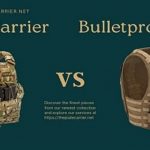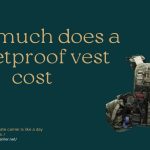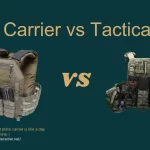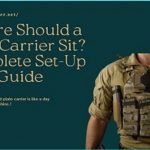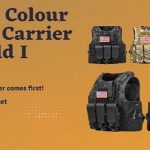How much does a bulletproof vest weigh? Bulletproof vests, also known as ballistic vests, are essential protective gear for individuals in potentially dangerous situations. Their primary function is to stop bullets and shrapnel, safeguarding the vital organs in the chest and torso. However, choosing the right vest can be challenging due to the diverse options available, each with varying weights, protection levels, and features.
This comprehensive guide explores the weight of bulletproof vests, analyzing factors that influence it and providing helpful information for readers to make informed choices.
How much does a bulletproof vest weigh? Find the Perfect Balance
The weight of a bulletproof vest can vary depending on its design, materials, and level of protection. Generally, bulletproof vests can range from as light as 5 pounds (2.3 kilograms) for a basic level of protection to 20 pounds (9 kilograms) or more for vests designed to provide higher levels of protection against more powerful ammunition.

Factors Influencing the Weight of a Bulletproof Vest:
Several key factors influence the weight of a bulletproof vest:
1. Material:
- Soft Armor: Constructed from flexible materials like Kevlar®, Twaron®, or Dyneema®, these vests offer lower weight (typically 3-5 pounds) and superior comfort but provide limited protection against high-caliber ammunition.
- Hard Armor: Utilizing ballistic plates made of ceramic or metal, these vests offer superior protection against rifle rounds but significantly increase weight (5-10 pounds per plate).

2. Protection Level:
Bulletproof vests are categorized according to their protection level based on the National Institute of Justice (NIJ) standards. Higher levels offer more protection but come at the expense of additional weight:
- Level IIIA: Stops most common pistol calibers (up to .44 Magnum) and weighs roughly 3-7 pounds.
- Level III: Stops rifle rounds (up to 7.62x51mm) and weighs 7-10 pounds with soft armor and 15-25 pounds with hard plates.
- Level IV: Stops high-powered rifle rounds (up to .30-06 AP) and weighs approximately 20-35 pounds with hard plates.
3. Size and Design:
Naturally, larger vests weigh more due to the increased material used. Additionally, features like additional pockets, pouches, and straps further contribute to the overall weight.
4. Brand and Manufacturer:
Different brands and manufacturers employ various materials, construction techniques, and design philosophies, leading to variations in weight even within the same protection level.
5. Special Features:
Additional features like ballistic collars, groin protectors, and trauma plates add to the weight and overall bulk of the vest.
Finding the Right Balance: Weight vs. Protection
Choosing a bulletproof vest requires finding the right balance between weight and protection. Consider the following factors:
- Threat Level: Evaluate the potential threats you might encounter. This will help determine the necessary protection level.
- Comfort and Wearability: The vest should be comfortable enough for extended wear without causing fatigue or hindering movement.
- Activity Level: Consider the type of activity you will be engaging in while wearing the vest. Strenuous activities require lighter and more flexible options.
- Personal Preferences: Individual preferences regarding comfort, features, and brand can influence your decision.
Related Post: Plate Carrier vs Bulletproof Vest

